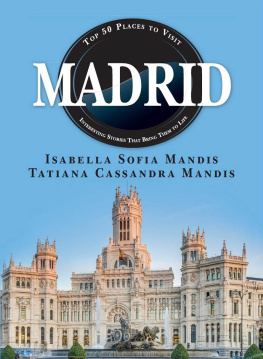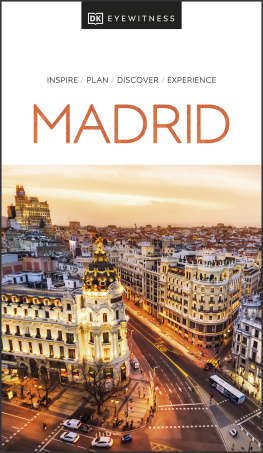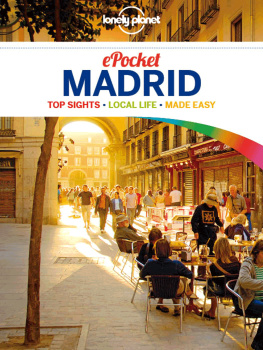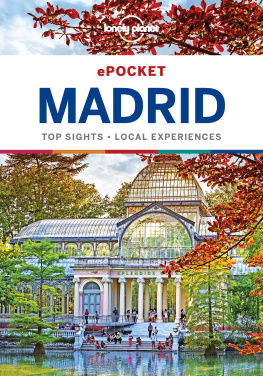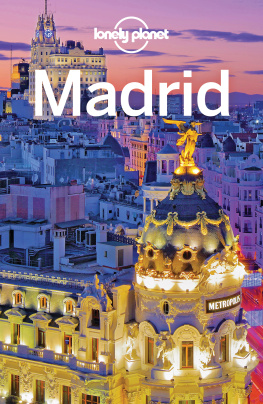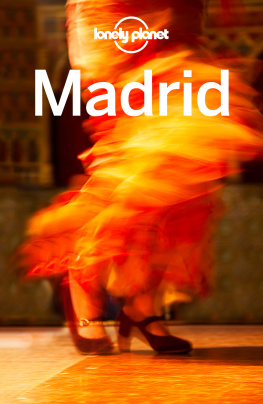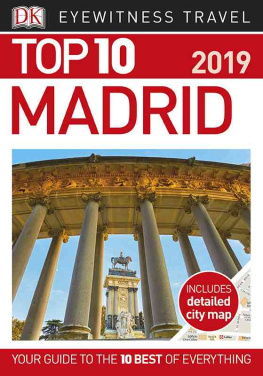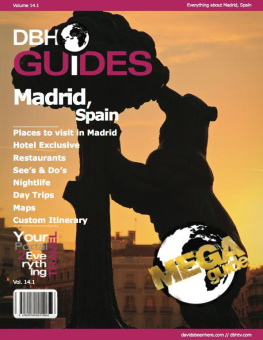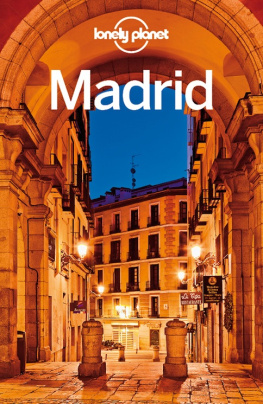
Copyright 2014 Isabella Sofia Mandis and Tatiana Cassandra Mandis
All rights reserved.
ISBN: 1491240725
ISBN 13: 9781491240724
DEDICATIONS
We dedicate this book to our father and mother. We would like to thank our father, in particular, who advised us, assisted us in finding interesting stories to include, edited our text, and helped us organize the book. We would also like to thank our mother, who helped us with the editing, layout, design, and photography.
We dedicate this book to all our wonderful friends and the kind people we met in Spain during our fun family adventure from April to August 2013. The Spaniards passion for their family and friends is incredible. Madrileos are truly the special attraction of Madrid.
We would like to thank our administrators, teachers and friends at Kings College School, La Moraleja in Madrid, as well as the staff at the Carlos Moya SD Tennis Academy in Madrid, all of whom made us feel welcome and special.
We would like to thank our administrators, teachers and friends at The Spence School in New York who supported and encouraged our experience.
We would like to thank Borja Arteaga Fierro, Roco Barreiros Spnola, Anya Bartels-Suermondt, Juan Pedro Domecq Morens, Sofa Cotoner, Pelayo Primo de Rivera, Ins Entrecanales Franco, Carolina Herrera de Bez, Miguel Bez Spnola, Bibiana Fierro March, Per Kronholm, ngel Gonzlez Hernndez, ngel Gonzlez Blzquez, Simn Gonzlez Blzquez, Antonio Lpez Fuentes, Edward Lewine, Mara Teresa Fazzini, Inma Casado, Carlos M. de Albornoz, Eliza Arcaya, Diego Cabrera, and our parents for helping us with the book.
SPECIAL THANKS
Our parents moved our family to live in Madrid, Spain for five months so that we could have an experience outside of New York City (including going to a different school). We now have such a deep understanding and appreciation of Spanish language, history, culture, lifestyle and people. Also, we learned that we could adapt to a new environment and grow with change and new opportunities. We had such a fantastic time and made many new friends. Thank you so much to our parents for this adventure! It was such a special, positive family bonding time that we will remember for the rest of our lives.
PLEASE NOTE
The reader should understand that the material we have used comes from stories that we have been told. This is not a history textbook. We are not historians or experts. We are just thirteen and ten years old. However, before we included any topic in the book, we researched it as much as we could. We have tried to translate as accurately as possible from Spanish to English throughout the book where applicable. Also, we do not provide opening and closing hours or entry fee information because they often change. Please check official websites for this information.
INTRODUCTION
Before we moved to Madrid, our parents asked us to start to research the city and come up with places that we wanted to see and why. This helped us get excited about sightseeing and remember more about each place. After visiting the sights, we added to our research. We decided to turn our work into a book to help others similar to Tatianas book on Athens.
This book has a list of our top 50 places to visit in Madrid. However, instead of describing the places, we have included interesting stories about them to help bring them to life. We divided the information into sections to make the information more accessible. We grouped the places by general area to help you plan your trip.
We hope the book serves as your personal guide and allows you to explore Madrid on your own and at your own pace. We hope the stories bring the places to life and help you appreciate their history and significance. Most of all, we hope this book helps make your trip easier to plan and more fun, interesting and enjoyable.
Madrid is a very special place with lots of history and many places to see. We are certain that you will have an amazing time. We love Madrid because it has friendly people, delicious food, beautiful architecture, fantastic parks, magnificent museums, glorious history and wonderful culture.
CONTENTS
SPAIN AND SURROUNDING AREAS


MADRID


RETIRO PARK


OLD CITY CENTER AND PALACIO AREAS

HISTORY OF MADRID
Madrid can trace its history back to the 9th century, but it did not become the capital of Spain until 1561. The Madrid that we see today really started in 1759 with Carlos III, one of the most popular kings in the history of the city hence his nickname, the best mayor of Madrid.
9TH CENTURY MUSLIM MADRID
Although the site of modern-day Madrid has been lived in since pre-historic times, it was not until the beginning of the 8th century that a Muslim army, made up largely of Moors (Muslims originally from North Africa) and some Arabs (Muslims originally from the Arabian peninsula), invaded and conquered nearly the entire Spanish peninsula. During the next 750 years, independent Muslim states were established and the entire area of Muslim control became known as Al-Andalus. The first historical data from the city comes from the 9th century, when Muhammad I of Crdoba ordered the construction of a small castle in the same place that is today occupied by the Palacio Real de Madrid. Around this palace, a small fortress to protect the town, al-Mudayna, was built. Near that castle was the Manzanares River, which the Muslims called al-Majr (source of water). From this nickname came the naming of the site as Majerit, which was later changed into the modern-day spelling of Madrid.
11TH CENTURY CHRISTIAN MADRID; 1492 RECONQUISTA COMPLETED; NEW WORLD FOUND
Very few years after the Muslim invasion of the Spanish peninsula, the Christian kingdoms in the north of Spain began a long and slow recovery process called the Reconquista. As a result of the Reconquista, Alfonso VI of Len and Castilla conquered the Muslim castle in 1085 in his progress toward Toledo. He changed the Muslim mosque to a Christian church, called the Virgin of Almudena. In 1383, King John I of Castilla named Leo VI of Armenia Lord of Madrid. After a big fire in the late 14th century, Henry III of Castilla rebuilt the city. Although Christians controlled Madrid, large areas of the Spanish peninsula were still ruled by Muslims.
Fernando II of Aragn and Isabel I of Castilla (Isabel the Catholic) married in 1469, uniting the two kingdoms. Their marriage brought stability to the united kingdoms, which became the basis for Spain.
Next page
